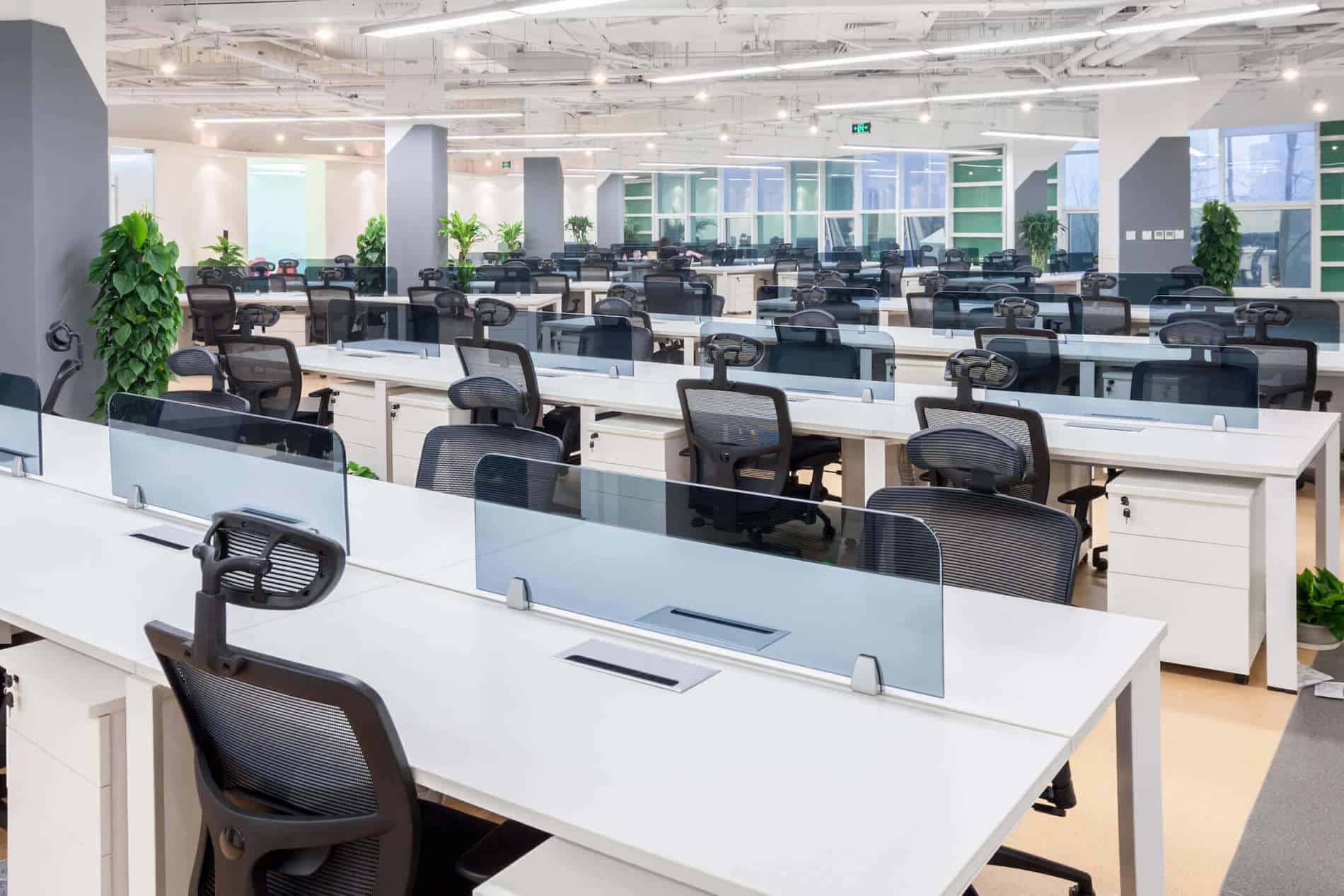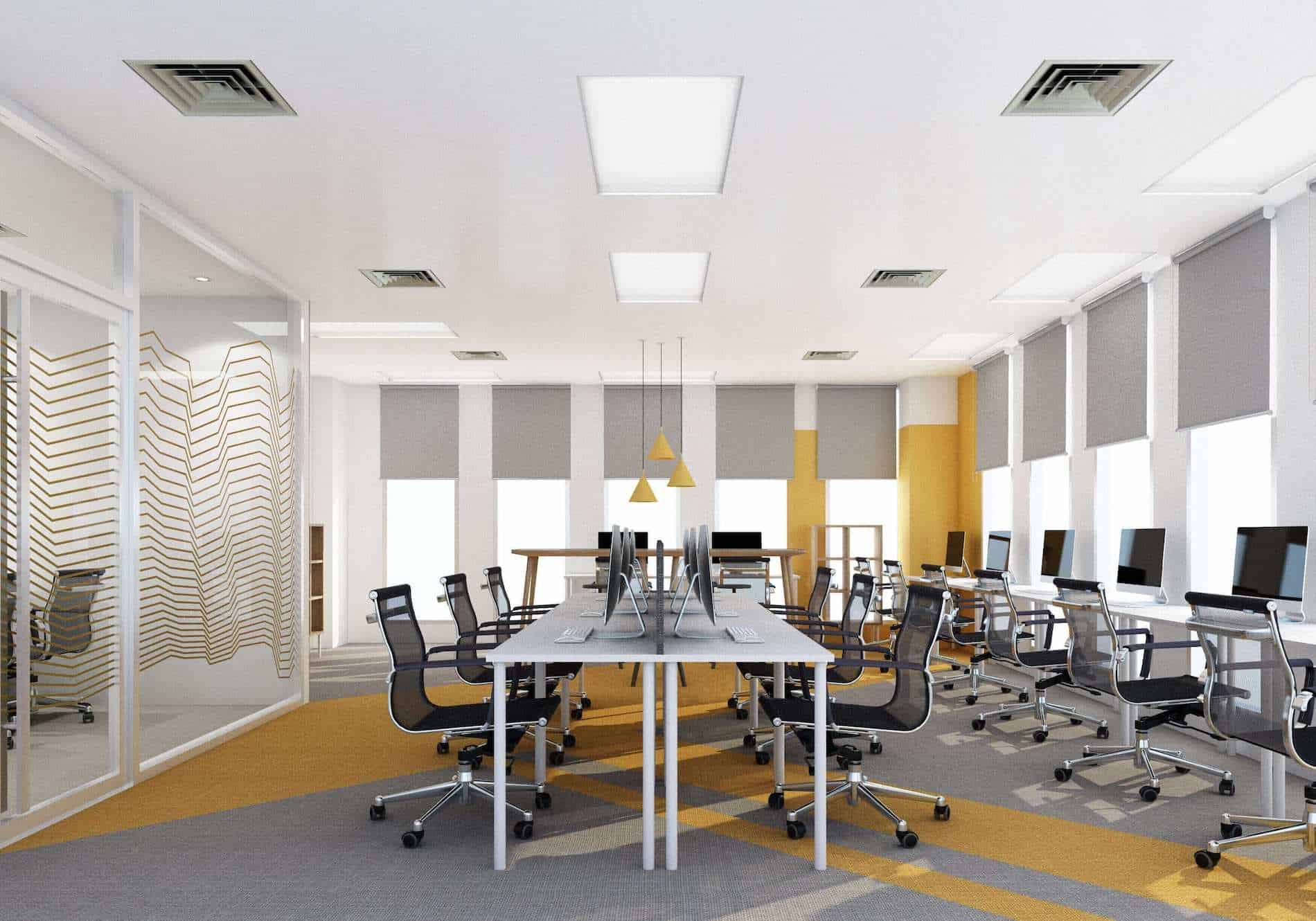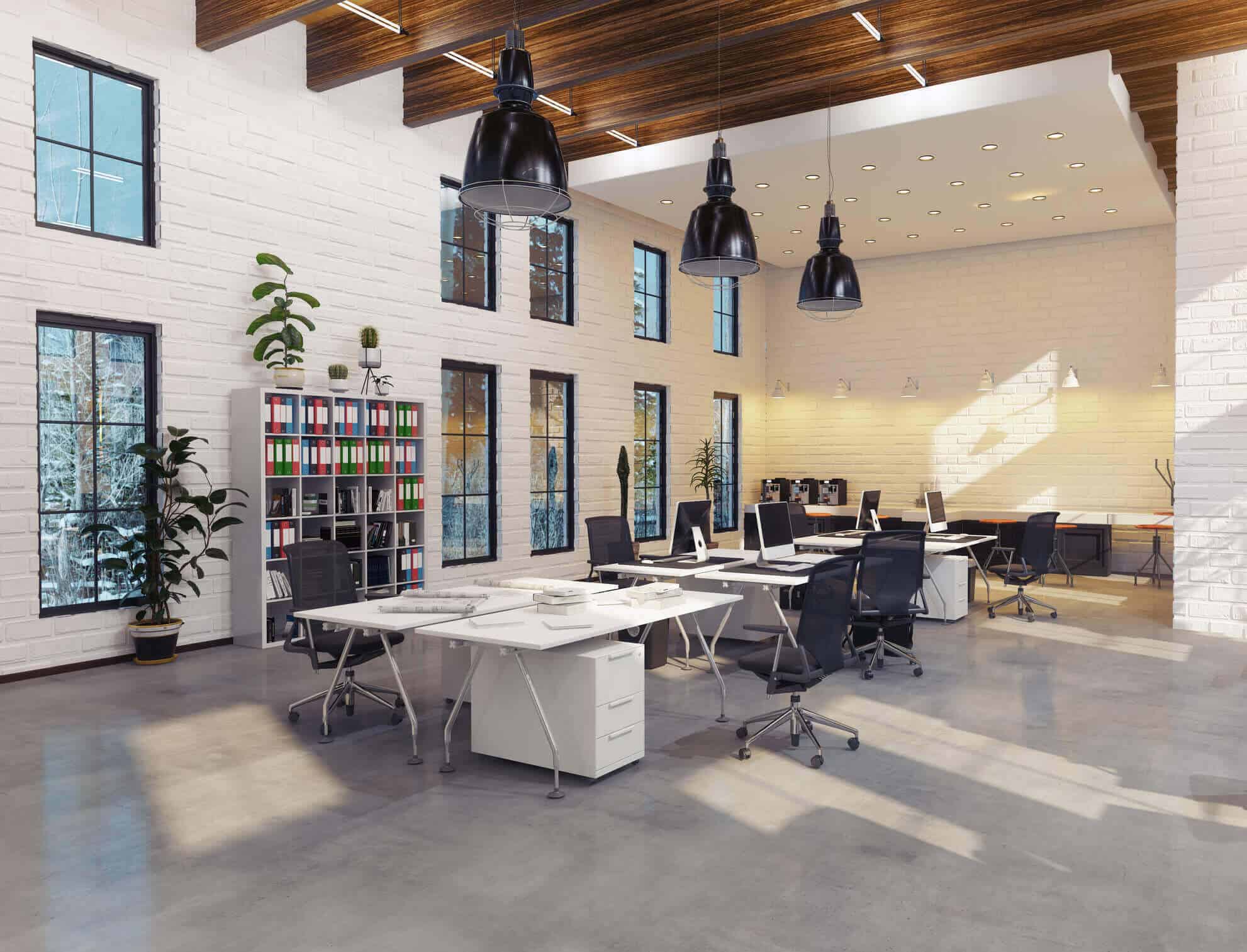There’s an old saying: “A good neighbor is a priceless treasure.” While this expression refers to residential neighbors, it’s just as true in a professional setting. Office neighborhoods are a new way to imagine and utilize office space, and are an increasingly common sight at businesses across the country. Instead of sitting at separate workstations, colleagues interact and work in different areas designed for specific uses and capabilities.
Office neighborhoods combine elements of agile- and activity-based approaches to productivity. Working in communities makes it easier to socialize with coworkers without sacrificing productivity. When executed well, these “neighborhoods” can foster collaboration and make teams more productive.
Office communities are based on the straightforward premise that co-workers who get along are more productive as a unit than they would be individually. For instance, studies show that proximity to co-workers improves outcomes. And with workers returning to the office after years of working from home, office neighborhoods can be the reason why employees make the commute.
What Is the Office Neighborhood Concept?

Overall, the objective behind this concept is to provide employees with a more flexible and productive work environment that supports their daily workflow. Even if you already group your teams, the neighborhood concept leads to larger communities, including multiple interconnected teams and options for hot desking — a system in which employees use available desks at different times on a first-come, first-serve basis.
Benefits of Office Neighborhoods

Other benefits of office neighborhoods include:
Improved Teamwork
For many in-office workers, the daily commute is worthwhile because of the camaraderie that comes with working in close proximity to others. Office neighborhoods are ideal for fostering the kind of social interaction and collaboration opportunities that result in effective teamwork.
Flexibility
Adjusting to hybrid or other flexible working arrangements may be difficult for some employees. It’s easy to put off coming to work when you’re worried about sharing desk space with coworkers or not having a quiet place to focus on your job. Neighborhoods provide staff members the flexibility to choose where they sit, enabling them to find the spaces that foster their productivity.
Employee Satisfaction
The quality of your employees’ workspace has a direct impact on their happiness. Workplace neighborhoods boost morale by giving your staff more freedom in where and how they work.
Increased Collaboration
Companies are increasingly moving away from dedicated desks and toward flexible workspaces to reduce overall real estate costs and boost collaboration. An office neighborhood can reduce your footprint while creating an environment that promotes teamwork.
Drawbacks of Office Neighborhoods
While office neighborhoods provide many benefits in a workplace setting, they also have some drawbacks, including:
Distractions
While office neighborhoods and communal spaces are common in today’s offices, they may be a source of unwanted background noise and interruptions. If workers need peace and quiet to get their work done, this can be a significant source of disruption. Sound masking or acoustic solutions can help.
Privacy Issues
Due to the open nature of office neighborhoods, finding a quiet place to have a private meeting or work on a complicated project may be difficult. This lack of privacy is a potential problem in sectors that deal with sensitive information or require extensive focus. When designing the layout of your space, include dedicated conference rooms in your overall neighborhood floor plan to mitigate the lack of privacy and quiet.
Employee Pushback
Workers who are used to a more conventional office layout may need help transitioning to the office neighborhood setup. Your management team will play a key role in making a smooth transition. To help alleviate any concerns, it’s important for the team to address them early and with understanding. A great way to get more people on board with the change is to involve them in the reorganization project.
Access Disparity
Factors such as commute distance, seniority and office dynamics all contribute to how easy (or difficult) it is for certain workers to find attractive workstations. This can lead to increased competition and frustration. To prevent negative effects, organizations may need help managing and guaranteeing equal access. Workplace reservation software can help with this challenge.
Office Neighborhood Examples
Thanks to the creativity, cooperation and satisfaction they inspire, office neighborhoods are becoming more commonplace in today’s workplaces. Looking for ideas for your own office neighborhood design? These are a good place to start.
Google’s Campus-style Office
The Googleplex and other campus-style offices at Google are well-known for encouraging innovation and teamwork. Their open layouts and wealth of amenities such as volleyball courts and gourmet cafeterias contribute to a working environment that attracts employees.
AirBnB’s Dublin Office
Themed communities reflecting worldwide locations and cultures bring Airbnb’s unique and inspiring Dublin headquarters to life while reflecting the company’s “Belong Anywhere” philosophy.
Microsoft’s Redmond Campus
Microsoft built its Redmond Campus with teamwork and flexibility in mind. Its varied neighborhoods offer quiet libraries for concentrated work and lively cafes for team brainstorming. The campus also emphasizes sustainability and community, making it a well-rounded office environment.
4 Tips for Designing an Office Neighborhood
Don’t worry if you need a few pointers for your office neighborhood design. With the following four tips, you’ll have yours up and running in no time:
1. Recognize the Needs of Your Team
Before you get started, it’s essential to identify your team’s needs. Gather information from workers via surveys, focus groups or one-on-one chats. Find out what your team does and if it requires silence, concentration, teamwork, or brainstorming to get the job done.
2. Keep Adaptability Top of Mind
Make your office neighborhood layout as fluid as possible. Keeping up with the ever-evolving demands of today’s workplace calls for a flexible design. To make it easy to change the scenery, incorporate readily movable pieces of furniture and movable walls into your design.
3. Control Noise Levels
The noise level in an open office environment has the potential to majorly affect productivity and morale. This is why noise control is an essential consideration for the layout of your office neighborhood. To ensure optimal working environments for all employees, providing a good mix of communal working rooms and individual study nooks is essential. You can also reduce ambient noise with acoustic panels, soundproof booths and a carefully planned layout.
4. Maintain Your Company Culture
Your office neighborhoods should reflect your company’s culture. Relaxed, playful brands will want neighborhoods that echo those themes through their design and layout — perhaps by using bold colors and modern furniture. Alternatively, a quieter, more traditional atmosphere created through calm, neutral tones and classic furnishings will signal those qualities to employees and guests.
Create Your Office Neighborhood with DGI
Office neighborhoods effectively bring coworkers together and encourage collaboration, well-being, happiness and productivity. When implemented effectively, these office communities can dramatically improve employee engagement and satisfaction.
With decades of experience bringing clients’ visions for their office spaces to life, DGI is a pioneer in redesigning workspaces. In addition to balancing adaptability and structure, we’re also committed to showcasing your company’s culture, making use of the latest technology and anticipating your staff’s ever-evolving needs.
If you’re ready to bring office neighborhoods to your workplace, DGI’s expert team is ready to help. Contact us today for a consultation.

